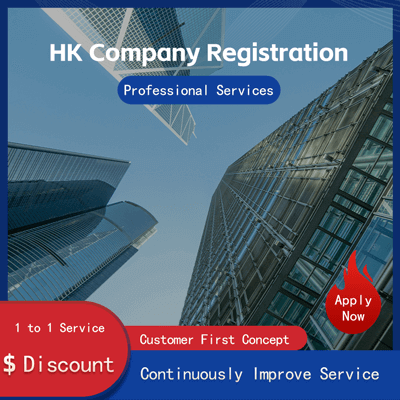
Comprehensive Analysis on Querying U.S. Corporate Equity Information How to Obtain, Interpret and Utilize
Comprehensive Analysis of Equity Information Query for U.S. Companies How to Obtain, Interpret, and Utilize
In the dynamic world of global finance and investment, understanding the equity structure of companies is crucial for investors, analysts, and stakeholders alike. The United States, as a leading financial hub, offers a wealth of resources for those seeking detailed information about corporate ownership and equity. This article delves into how one can access, interpret, and utilize such data effectively.

Accessing equity information for U.S. companies typically begins with the Securities and Exchange Commission SEC. The SEC mandates that publicly traded companies file various reports, which are available through its online database known as EDGAR Electronic Data Gathering, Analysis, and Retrieval. For instance, Form 10-K provides an annual comprehensive summary of a company's financial performance, including its equity structure. Investors can also find quarterly updates in Form 10-Q, while insider trading activities are documented in Section 16 filings.
To obtain these documents, users visit the SEC’s official website and search by entering the company’s ticker symbol or name. Once accessed, the filings offer insights into the number of shares outstanding, shareholding patterns, and major shareholders. These details are essential for assessing a company’s financial health and strategic direction.
Beyond SEC filings, other sources provide supplementary information. Bloomberg and Reuters, two prominent financial news agencies, often publish articles analyzing stock ownership trends. For example, Bloomberg recently highlighted how institutional investors like BlackRock and Vanguard dominate the equity landscape in many large-cap U.S. companies. Such reports help contextualize the broader market dynamics influencing individual stocks.
Interpreting this information requires a keen understanding of key metrics. The percentage of shares held by institutional investors versus retail investors can indicate the level of confidence institutional players have in a company’s future prospects. Additionally, tracking changes in shareholder composition over time can reveal shifts in investor sentiment. A sudden increase in insider selling might signal concerns among executives about the firm’s near-term outlook.
For practical application, this data serves multiple purposes. Firstly, it aids in risk assessment; knowing who owns what portion of a company helps evaluate potential conflicts of interest or alignment between management and shareholders. Secondly, it supports decision-making processes when constructing diversified portfolios. By analyzing the equity distribution across industries, investors can identify undervalued sectors ripe for investment.
Moreover, these insights play a pivotal role in corporate governance discussions. Active participation in shareholder meetings and voting rights exercises become more informed endeavors armed with knowledge of existing shareholdings. This empowerment extends beyond just monetary returns-it fosters transparency and accountability within corporations.
However, challenges remain in leveraging this information fully. Parsing through dense legal jargon present in SEC filings demands patience and familiarity with regulatory terminology. Furthermore, while publicly available data paints broad strokes, private companies do not disclose similar levels of detail unless they go public or undergo mergers and acquisitions involving public entities.
Despite these hurdles, technological advancements continue to democratize access to equity information. Platforms like Robinhood and Fidelity now integrate tools allowing retail investors to track real-time stock movements alongside fundamental analyses derived from public records. Such innovations level the playing field somewhat but still require users to critically appraise the information they receive.
In conclusion, comprehending U.S. company equity information involves both technical skillsets and strategic acumen. By harnessing resources like SEC filings, financial media outlets, and advanced software solutions, individuals can make well-informed decisions regarding investments and advocacy efforts. As markets evolve, so too will the methods used to analyze and act upon equity data, ensuring continued relevance for all participants in the financial ecosystem.
Still have questions after reading this? 26,800+ users have contacted us. Please fill in and submit the following information to get support.

Service Scope
More


 ONE
ONE
Customer Reviews
Small *** Table
December 12, 2024The experience was very good. I was still struggling to compare it with other companies. I went to the site a few days ago and wanted to implement it as soon as possible. I didn't expect that everything exceeded my expectations. The company is very large, with several hundred square meters. The employees are also dedicated and responsible. There is also a wall of certificates. I placed an order on the spot. It turned out that I did not make a wrong choice. The company's service attitude is very good and professional. The person who contacted me explained various things in detail in advance. After placing the order, the follow-up was also very timely, and they took the initiative to report the progress to me. In short, I am very satisfied and recommend this company!
Lin *** e
December 18, 2024When I first consulted customer service, they recommended an agent to me. They were very professional and patient and provided excellent service. They answered my questions as they came in. This 2-to-1 service model is very thoughtful. I had a lot of questions that I didn’t understand, and it’s not easy to register a company in Hong Kong. Fortunately, I have you.
t *** 7
December 19, 2024I originally thought that they only did mainland business, but I didn’t expect that they had been doing Hong Kong business and were doing very well. After the on-site interview, I decided to ask them to arrange the registration of my Hong Kong company. They helped me complete it very quickly and provided all the necessary information. The efficiency was awesome. It turns out that professional things should be done by professionals.👍
b *** 5
December 16, 2024In order to register a company in Hong Kong, I compared many platforms and stores and finally chose this store. The merchant said that they have been operating offline for more than 10 years and are indeed an old team of corporate services. The efficiency is first-class, and the customer service is also very professional.